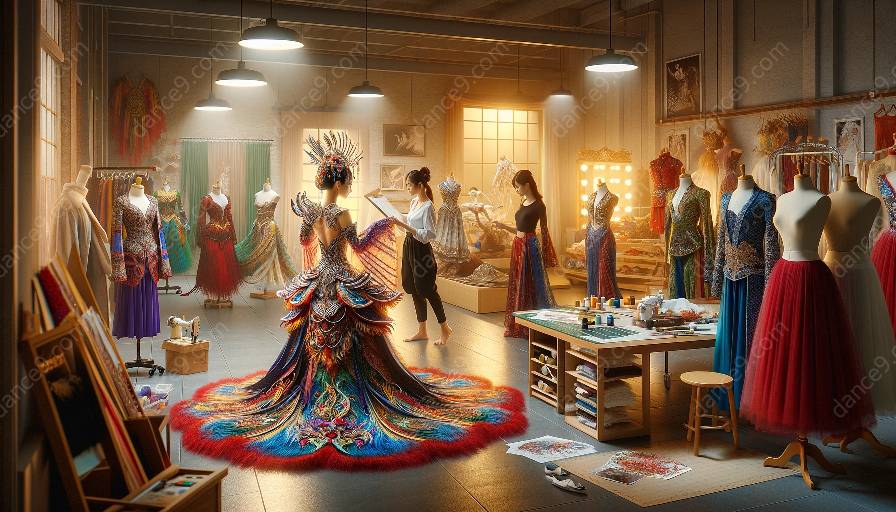Costume design plays a vital role in the portrayal of cultural and historical authenticity in dance performances. It goes beyond aesthetics, serving as a means of connecting with the traditions and stories embedded within the dance form.
Authenticity in costume design for dance entails a deep understanding of the cultural and historical context that the performance seeks to represent. Whether it is traditional folk dances or classical ballet, the costumes worn by the dancers carry significant cultural and historical value that impacts the overall storytelling and portrayal of the art form.
The Significance of Authentic Representation
When designing costumes for dance performances, it is crucial to ensure that they authentically represent the specific cultural or historical narrative being depicted. This involves meticulous research and collaboration with experts or cultural advisors to accurately capture the essence of the costumes and their symbolic meanings.
Authentic representation in costume design contributes to the preservation and celebration of diverse cultural heritages. It serves as a form of respect towards the traditions and histories of different communities while promoting an inclusive and accurate portrayal of diverse dance forms.
Connecting with Tradition and Legacy
Cultural and historical costume design allows dancers to establish a profound connection with the traditions and legacies of the dance forms they represent. By donning authentic costumes, dancers embody the spirit of the cultures and time periods from which the dances originated, enhancing the immersive nature of their performances.
Challenges and Considerations
While prioritizing authenticity in costume design, designers and choreographers encounter challenges such as balancing historical accuracy with practicality and artistic interpretation. It is essential to find a harmonious blend that respects the integrity of the traditional costumes while ensuring the dancers' comfort and mobility on stage.
The Impact on Audience Experience
Authentic cultural and historical costume design enhances the overall audience experience by offering a transformative journey into different eras and cultural landscapes. The visual authenticity of the costumes enriches the storytelling, evoking a sense of appreciation and understanding for the cultural nuances embedded within the dance performances.
Embracing Diversity and Representation
Furthermore, embracing authenticity in costume design for dance promotes diversity and representation within the performing arts. It fosters an environment where dancers from various cultural backgrounds feel valued and seen, as their traditions and customs are genuinely honored through the costumes they wear during performances.
Conclusion
Authenticity in cultural and historical costume design for dance is an integral aspect of preserving, honoring, and celebrating the rich tapestry of global cultural heritage. By prioritizing genuine representation in costume design, dance performances become powerful vehicles for promoting cross-cultural understanding and appreciation, ultimately enriching the artistic landscape with their profound and authentic storytelling.











































